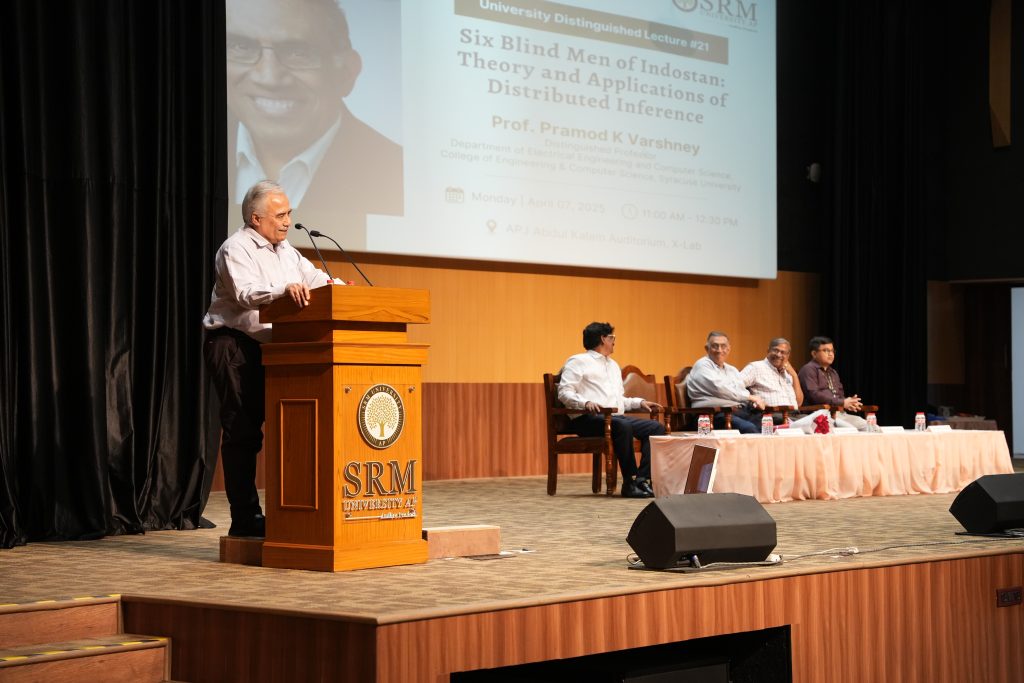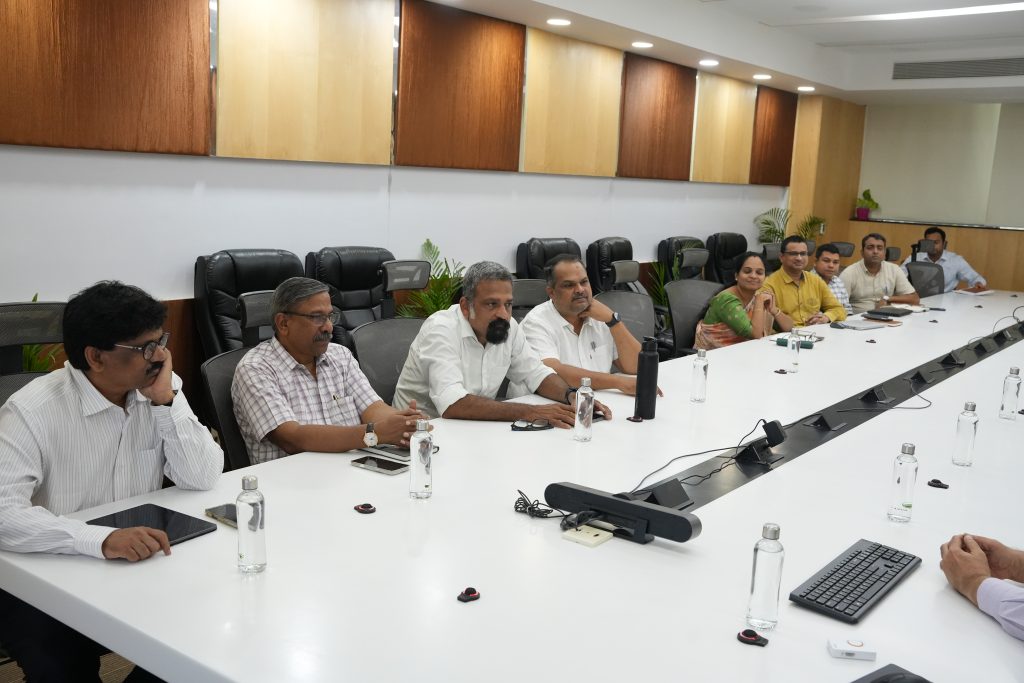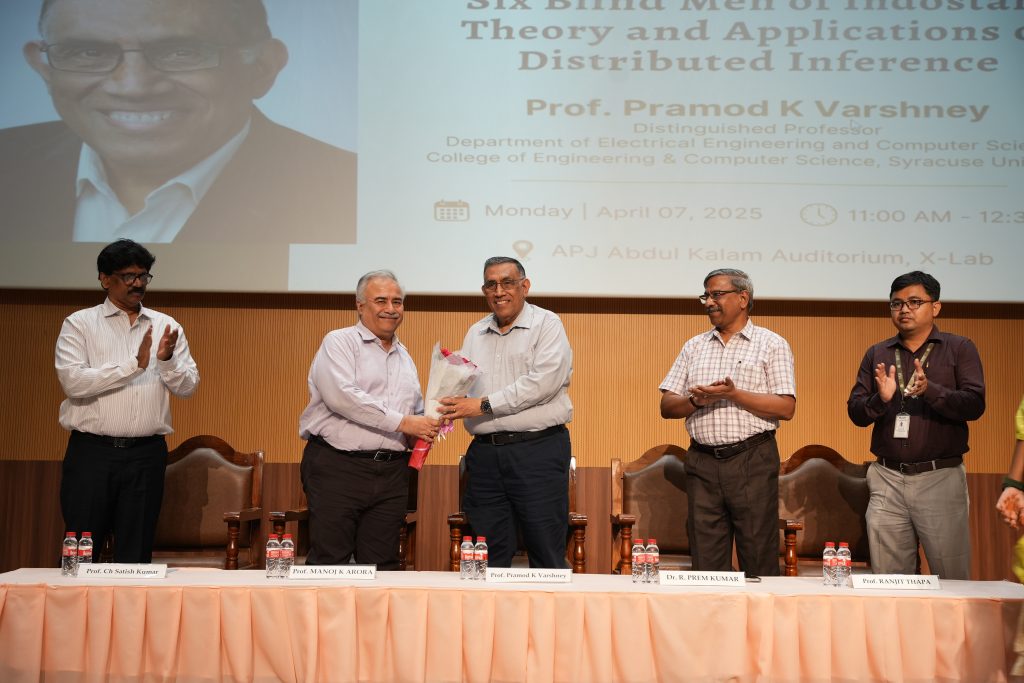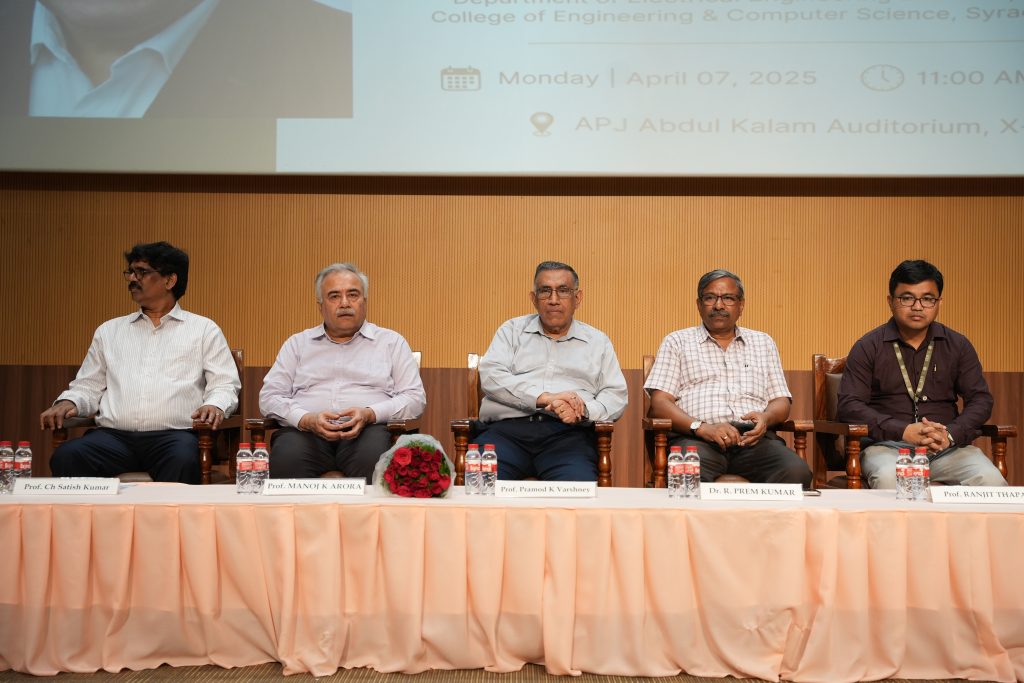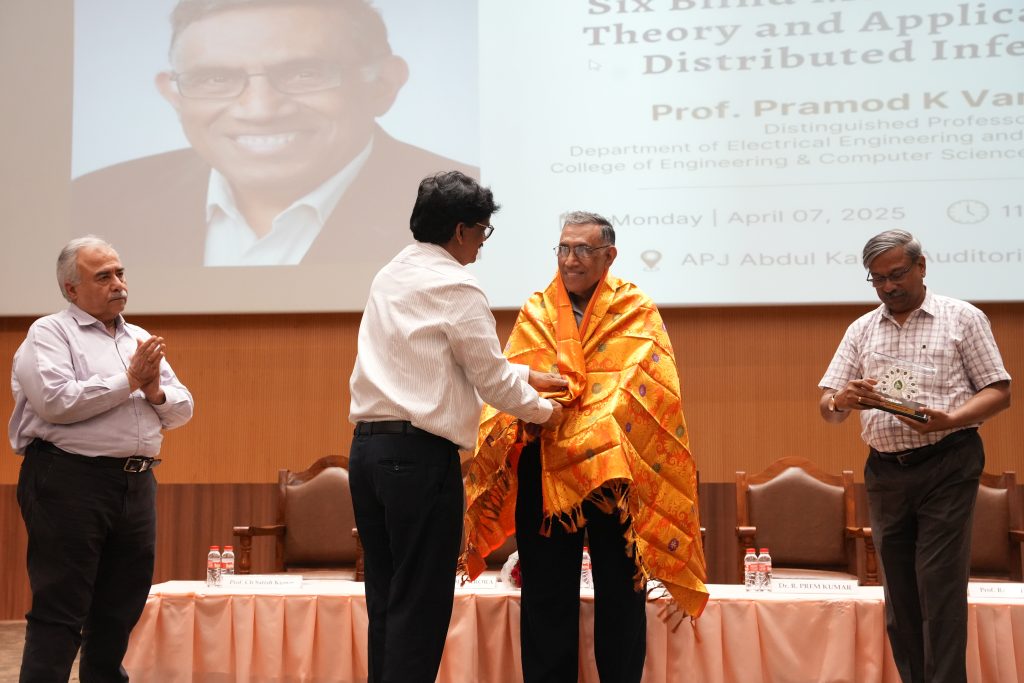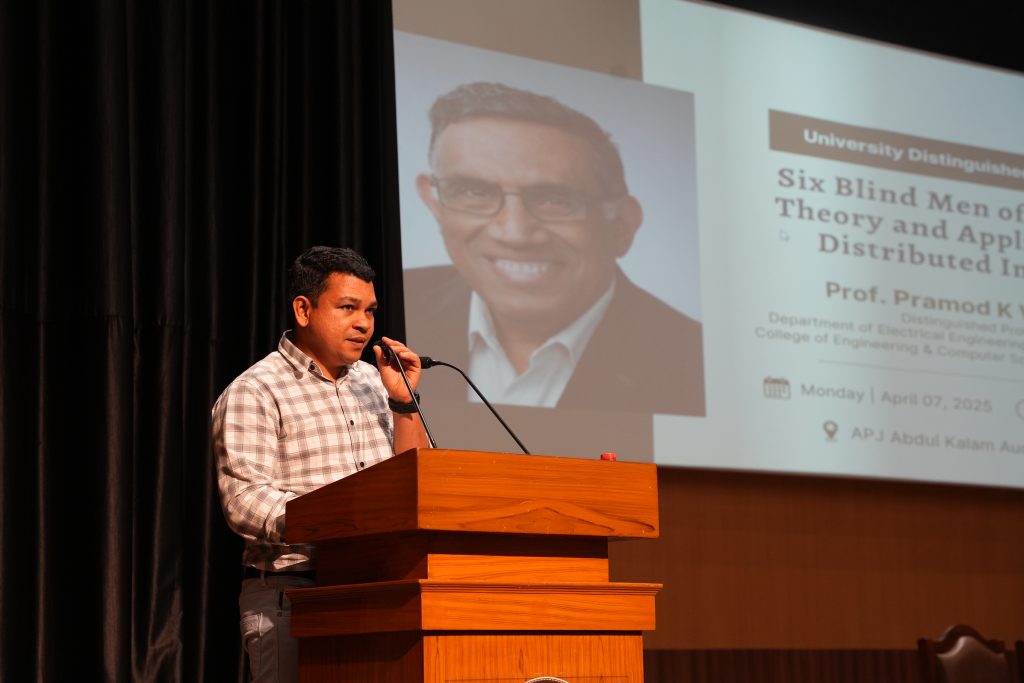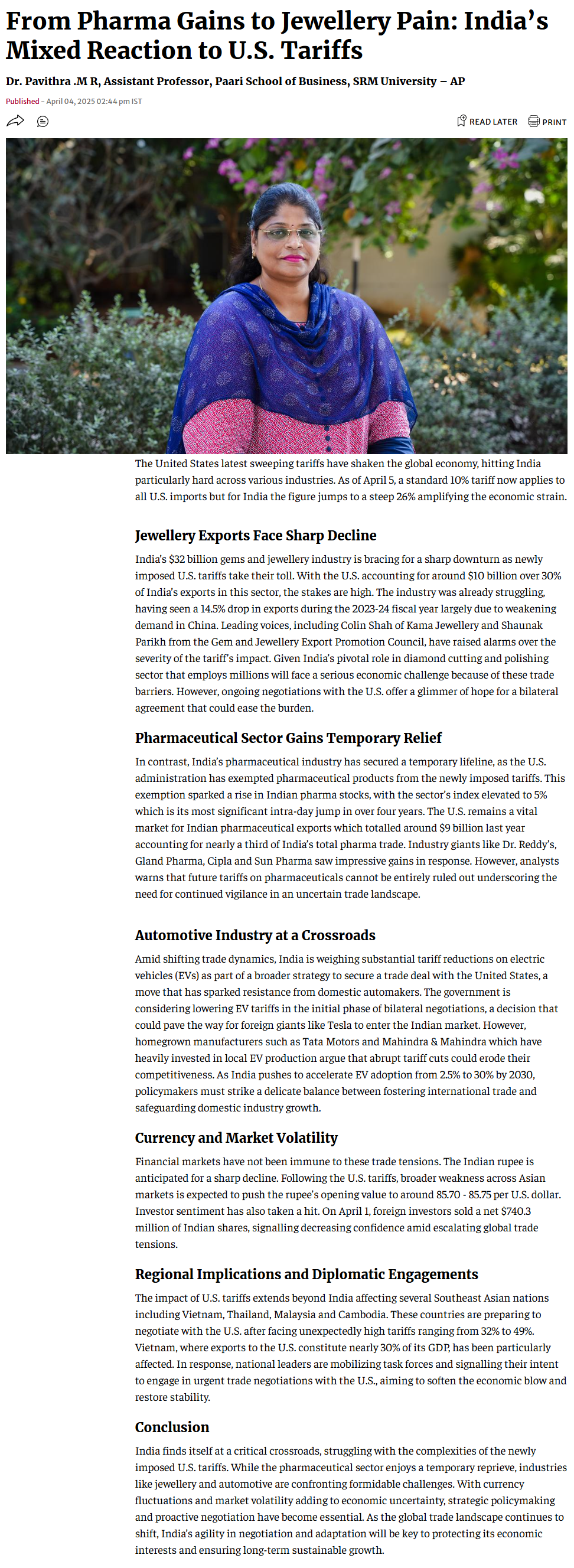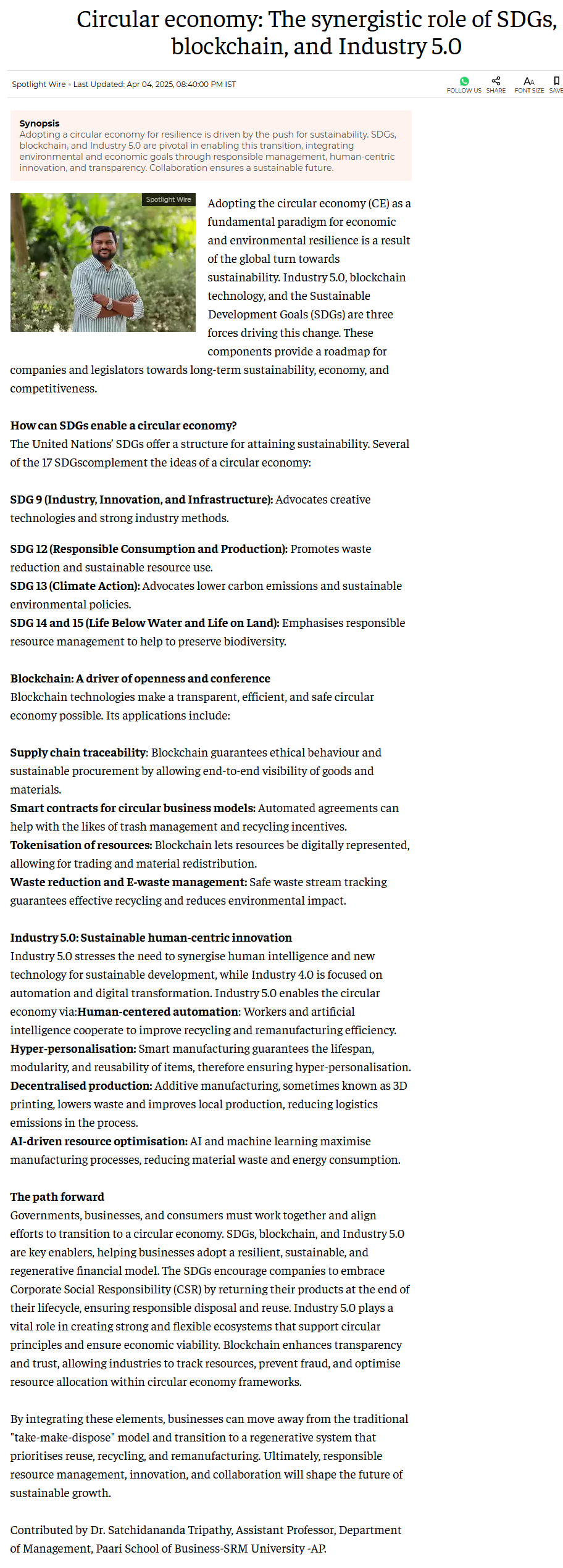All Management Events
- Dr Anil K Suresh’s Work in Sustainable Nanoscience Lead his Scholar to Achieve Success April 9, 2025
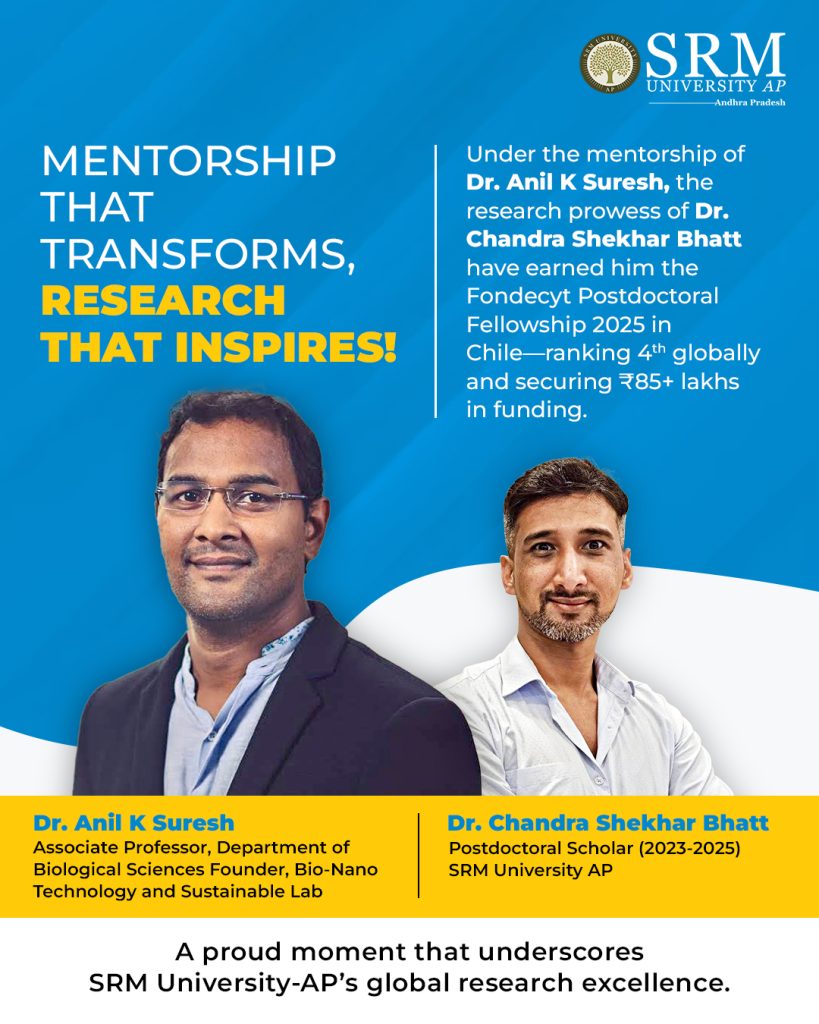
Dr Anil K Suresh, Associate Professor in the Department of Biological Sciences and Principal Investigator of the Bionanotechnology and Sustainable Lab, has achieved yet another feat with his ground-breaking work in sustainable nanoscience. His lab, committed to eco-conscious research, focuses on the sustainable synthesis of nanoparticles for applications in drug delivery, environmental remediation, and catalysis.
An outstanding accolade of his mentorship is the recent achievement of Dr Chandra Shekhar Bhatt, his former PhD student and Postdoctoral Scholar, who has secured the prestigious Fondecyt Postdoctoral Fellowship 2025 in Chile—ranking 4th globally and receiving over ₹85 lakhs in funding.
Under Dr Suresh’s guidance, their collaboration led to 12+ high-impact publications and global recognition, including features in C&EN, USA. Dr Suresh’s contributions span 64 Scopus-indexed papers, 27 book chapters, 4 books, 7 patents, and numerous fellowships and awards. Through his start-up, GreenGen Science Solutions, he champions scalable green innovations like the revolutionary “Jumbocatalyst” for hydrogenation reactions, “specfilm” for UV-spectroscopy, and “ultra-stable gold nanoparticles” transforming waste into eco-saving technologies.
Dr Anil K Suresh’s remarkable journey and the ripple effect of his visionary leadership inspire all researchers at the SRM AP community. Dr Chandra S Bhatt’s success in securing the prestigious fellowship is a testament to the high-quality research conducted at SRM AP.
Continue reading → - Dilip Kumar Vallabhadas April 8, 2025
- Venkata Sreekanth Balijabudda April 8, 2025
- “Major Breakthroughs Are Realised When Your Approach Is Multidisciplinary”: Insights from Prof. Pramod K Varshney at UDL #21 April 8, 2025
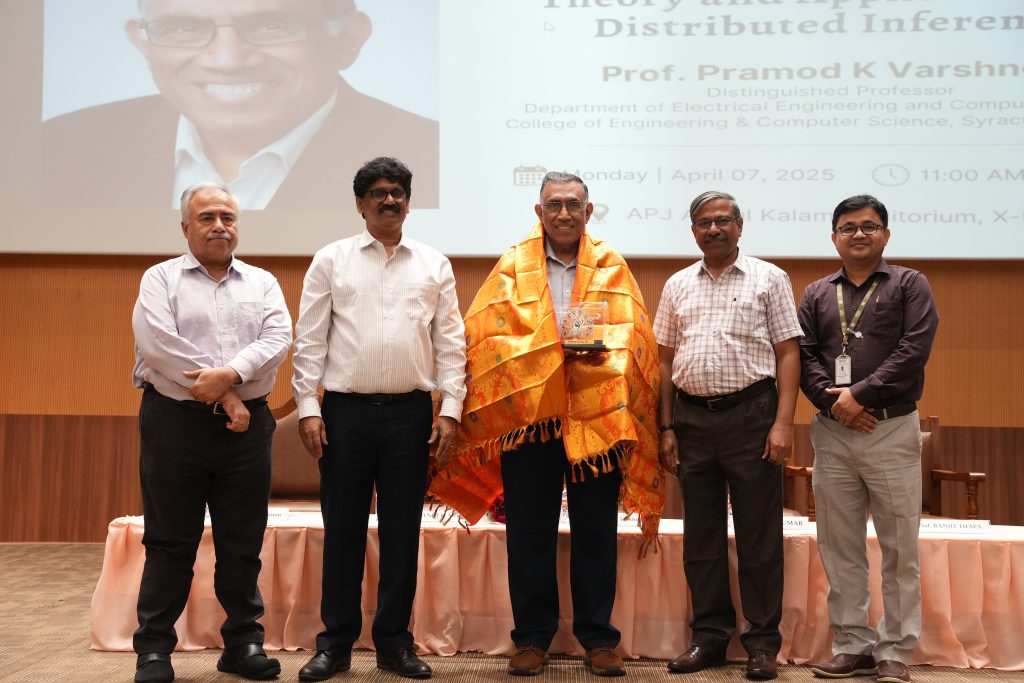 SRM University-AP hosted the 21st edition of its University Distinguished Lecture (UDL #21). The coveted event saw the presence of the distinguished speaker Prof. Pramod K Varshney from the Department of Electrical Engineering and Computer Science, College of Engineering and Computer Science, Syracuse University, New York. The title of UDL 21, “Six Blind Men of Indostan: Theory and Application of Distributed Inference” elaborated on the use of sensors to collect data and its application in the areas of Security, Surveillance, Disease Detection, Military services and so on.
SRM University-AP hosted the 21st edition of its University Distinguished Lecture (UDL #21). The coveted event saw the presence of the distinguished speaker Prof. Pramod K Varshney from the Department of Electrical Engineering and Computer Science, College of Engineering and Computer Science, Syracuse University, New York. The title of UDL 21, “Six Blind Men of Indostan: Theory and Application of Distributed Inference” elaborated on the use of sensors to collect data and its application in the areas of Security, Surveillance, Disease Detection, Military services and so on.UDL #21 saw the presence of university leadership including Vice Chancellor, Prof. Manoj K Arora; Pro-Vice Chancellor Prof. Ch Satish Kumar; Registrar Dr R Premkumar; Dean-Research Prof. Ranjith Thapa, Deans of the three schools; faculty members; staff and students.
In his address, Prof. Arora lauded Prof. Varshney for his exceptional scholarship that goes beyond academia. He identified him as a great scholar and poetry enthusiast. Prof. Manoj K Arora underscored the importance of applying one’s research to real-world applications. He urged the attendees to integrate governance, industry, and academia to create wonders.
Prof. Pramod Varshney’s expertise in Signal Processing and Wireless Communications has helped in making remarkable contributions. During the lecture Prof. Varshney used the analogy of the blind men that described the elephant as various things. He stated that sensors are like blind men, their field of view is limited; the collective data inferred is then used to make decisions where the doctor tries to figure out the disease, the military commander on the action to take and so on.
Prof. Varshney also elaborated on how humans are also like sensors, sensors that work on biases. He stated that his research got him to experiment in diverse areas. He encouraged students to look for novel and innovative ideas to work on because “Major breakthroughs are realised when your approach is multidisciplinary.”
The session was followed by a ‘Q and A’ from students and faculty and culminated with the members of the leadership felicitating Prof. Varshney.
Continue reading → - The Unseen and Unheard Side of Social Media Responses April 7, 2025
- Karnataka’s Right to Die with Dignity: Between Autonomy and Ethical Complexity April 7, 2025
- Beyond Algorithms: How Blockchain Paves the Way for Safer Spaces for Women April 7, 2025
- From Pharma Gains to Jewellery Pain: India’s Mixed Reaction to U.S. Tariffs April 7, 2025
- Circular Economy: The synergistic role of SDGs, blockchain, and Industry 5.0 April 7, 2025
- Mr Ravindran Kesavan April 3, 2025


